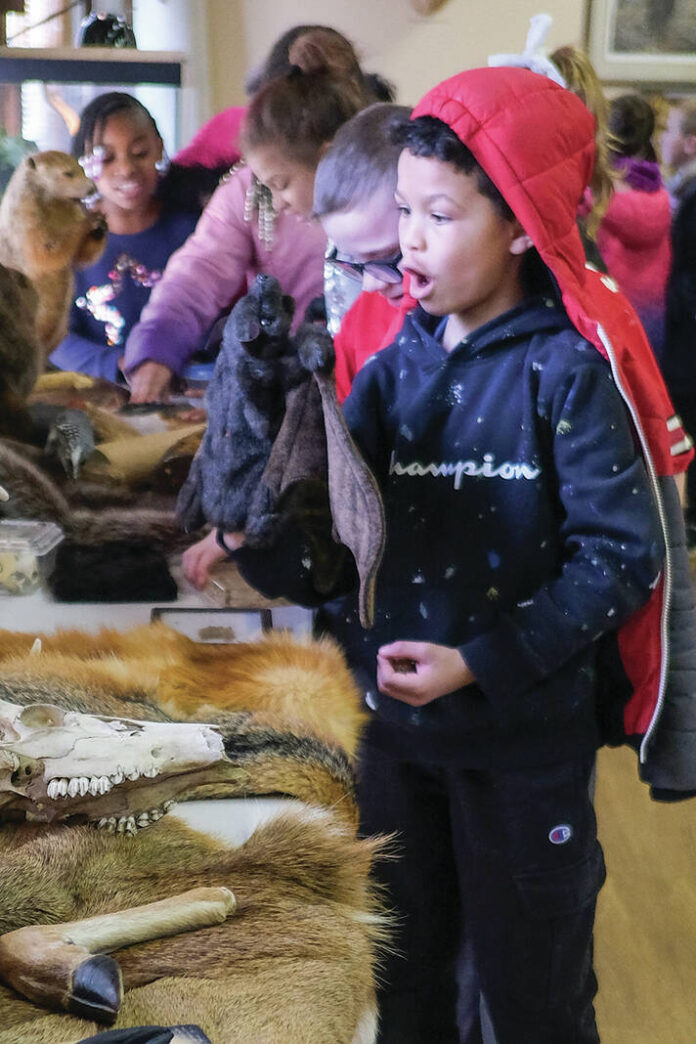LIMA — Beth Theisen, a naturalist with the Johnny Appleseed Park District, met with second grade students from Elida Elementary on Wednesday. Students were focusing on how living things can interact with non-living things, one of the Ohio state education standards in science.
The session began with a short walk around the McElroy Environmental Education Center to enter through the back door. The students were told to look for both living and non-living things as they walked around the building on a stone path. Inside, the students interacted with Theisen as she asked what are the characteristics of living things. The students generated a list. All living animals eat, breathe, move, can have babies, grow and die.
Then students were asked what living things they saw as they walked in. The students identified flowers, trees, grass, moss, birds and people as living things. As non-living things students saw dirt, mud, rocks and clouds. Students noted that leaves and sticks were found outside on the walk in and that they used to be living but now were non-living so a third category was formed.
The session inside then focused on a series of questions that were asked leading the students to draw a conclusion. The first question was “Do living things affect other living things?” the students looked at a number of pictures and decided if they agreed, thumbs up, or disagreed, thumbs down. One picture was of a mosquito on the arm of a human. The students drew the conclusion that living things do affect other living things.
The second question was “Do living things affect non-living things?” Moles digging through dirt, foxes digging a den, a beaver damming water all allowed the students to come to the conclusion that living things do affect non-living things.
The third question was “Do non-living things affect living things?” Pictures of tornado damage, rain and trees changing color because of the temperature and less sunlight were used to get a thumps up response from the students.
The students then were asked, “Do non-living things affect other non-living things?” A picture of a drought was used to explain that non-living rain or a lack of rain affects living plants as well as non-living dirt. Erosion along the coast and a tsunami were used as examples of non-living things affecting other non-living things. The students gave a boisterous thumbs up for the last question.
As the students headed outside again, they walked by two tables and interacted with taxidermied animals, skins, feathers and body parts of the animals they had seen in the pictures. Students then walked to McLean Teddy Bear park where they had lunch and took another hike learning about life in Ohio forests and ponds.
Theisen shared an additional goal of the lesson. She said, “I hope they have a great time outside. It’s so important for kids to spend time outdoors. So I hope they have a great time and that will translate to spending time out in their yard or in one of our parks.”
Reach Dean Brown at 567-242-0409







